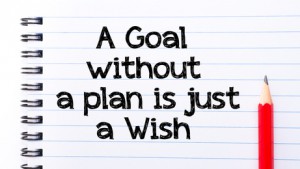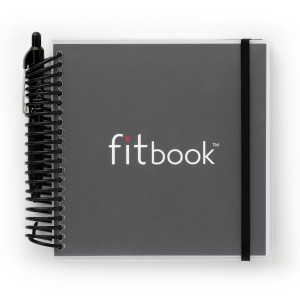How many times have you said that you were starting a diet or weight loss regime? For me like most people, it is at least once a year (for New Year’s resolution)!
But what happens after the declaration? Anyone can say they are going to lose a few pounds. But until we really make up our minds to do something, we are doomed to failure. I am determined to lower my BMI. So where should I start. It starts with planning!

A successful weight loss journey begins with a plan and focusing on specific goals to achieve your desired results. This time will be different because I have a goal and a plan!
STEP 1: Set SMART Fitness Goals
One of the best ways to start any weight loss plan is to use the SMART approach.
 S – Specific
S – Specific
The goals that you set on a daily, weekly, and monthly basis need to set specific behavioral changes. You can not simply state that you are going to lose some weight before summer. Instead, create a goal that you will exercise an hour a day and cut 200 calories out of your daily diet.
M- Measurable
Every goal that is set needs to be measurable and able to be documented. My goal is to lose at least 2 BMI points. Using a wi-fi smart scale, I can weigh myself and accurately track my body mass index simultaneously.
A – Attainable or Achievable
Is your goal attainable and can be achieved? I need to lose 30 pounds, but it is not possible within the next 30 days. A better goal would be to plan on losing 1.5 pounds each week.
R – Realistic
Every goal that is set needs to be grounded in reality. I wish I could exercise 30 minutes every day. But with my schedule that is impossible. A better goal would be to walk a half hour 3 times a week. This I know I can do.
T – Timely
No one can reach any goal if there is no time frame set in motion. My deadline is August 1.
STEP 2: Track Or Monitor Your Goals
The saying goes: “that which is measured, improves.” What does that mean?
Well, it means that collecting data is important. Simply by making sure that you log what you eat and how much you weigh, you’ll find that you’re somewhat drawn to getting better and you will unconsciously start making better decisions.
Sounds like nonsense? Well actually it’s confirmed by science. Studies show that simply asking people to weigh themselves results in them losing considerable weight over the course of a year even when they aren’t asked to make any other changes.
What Is A Fitbook? A Neat Little Tool!
 While you can use a fancy fitness tracker to keep tabs on your shape, the best and easiest way to collect more qualitative data is to use a diary. Fitbook is the perfect candidate to become that diary and will allow you to write down what you’re eating and how you’re training in a very structured manner.
While you can use a fancy fitness tracker to keep tabs on your shape, the best and easiest way to collect more qualitative data is to use a diary. Fitbook is the perfect candidate to become that diary and will allow you to write down what you’re eating and how you’re training in a very structured manner.
(That said, combining this with a fitness tracker would be brilliant.)
Specifically, the book includes a 12 week goal setting page that’s perfect for setting objectives, weekly planning pages and space to log measurements. On top of that, it includes the obvious food log which comes with trackers for things like nutrients, water and sleep.
The more data you collect, the better you’ll be able to spot correlations and patterns too.
As an added bonus, the book also comes with a free download that will help you to track yourself and that will talk you through the goal setting stages.
Next Steps
My goal is set to lose at least 2 BMI points by losing at least 12 pounds on an average of 1.5 pounds per week by August 1. I plan on exercising at least 3 times per week for a total of at least 120 minutes.
Are you with me?
Dianna 🙂



